Abbreviation Oct Declination −90 Bayer/Flamsteed designation 27 | Genitive Octantis Right ascension 22 Main stars 3 Stars with planets 3 | |
 | ||
Pronunciation /ˈɒktænz/, genitive /ɒkˈtæntᵻs/ Similar Apus, Mensa, Pavo, Indus, Chamaeleon | ||
Octans constellation
Octans /ˈɒktænz/ is a faint constellation located in the deep southern sky. Its name is Latin for the eighth part of a circle, but it is named after the octant, a navigational instrument. The constellation was devised by French astronomer Nicolas Louis de Lacaille in 1752, and it remains one of the 88 modern constellations.
Contents
- Octans constellation
- 3111 constellation octans
- History and mythology
- Characteristics
- Stars
- Namesakes
- References
3111 constellation octans
History and mythology
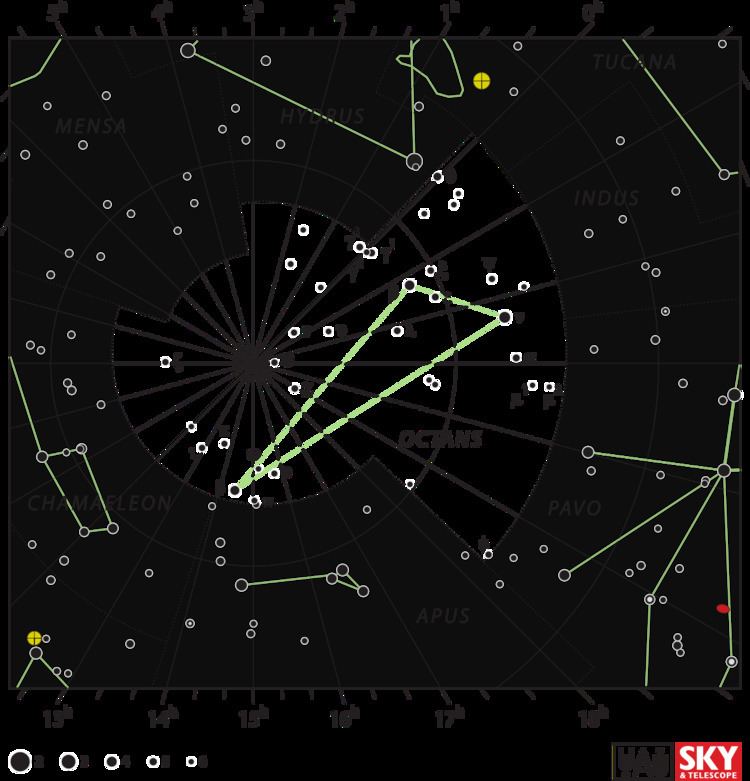
Octans was one of 14 constellations created by Nicolas Louis de Lacaille during his expedition to the Cape of Good Hope, and was originally named "l’Octans de Reflexion", French for “the reflecting octant”. It was part of his catalogue of the southern sky, the Coelum Australe Stelliferum, which was published posthumously in 1763. In Europe, it became more widely known as Octans Hadleianus, in honor of English mathematician John Hadley, who invented the octant in 1730. There is no real mythology related to Octans, partially due to its faintness and relative recentness, but mostly because of its extreme southerly latitude.
Characteristics
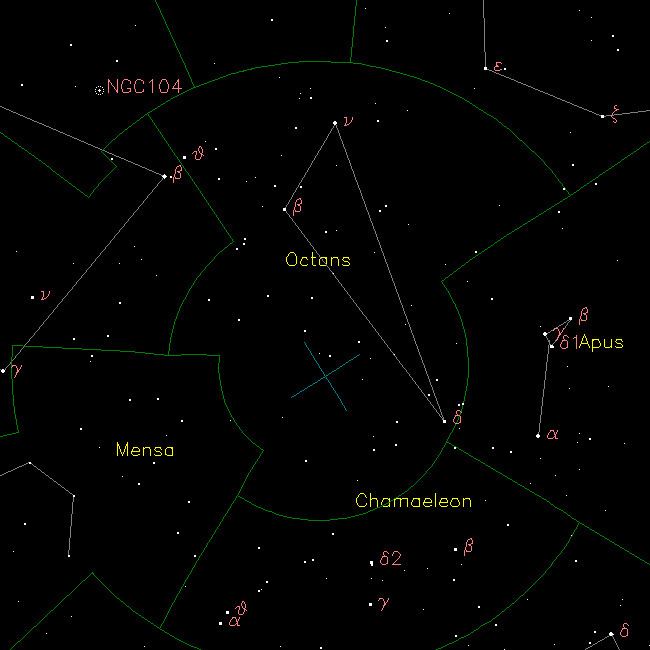
Octans is bordered by seven different constellations, most of which are far more prominent than itself: Apus (the bird-of-paradise), Mensa (the table), Chamaeleon (the chamaeleon), Pavo (the peacock), Indus (the Indian), Tucana (the toucan), and Hydrus (the male water snake). The three-letter abbreviation for the constellation, as adopted by the International Astronomical Union in 1922, is Oct. The official constellation boundaries are defined by an eight-sided polygon. Covering 291 square degrees, Octans ranks 50th in area out of the 88 modern constellations.
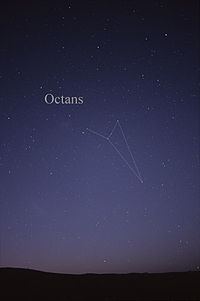
Because the constellation is circumpolar to the South Celestial Pole, it can be seen throughout the entire Southern Hemisphere at any given time of the year. The Right Ascension and months of best visibility given are for the three brightest stars, (Nu, Beta, and Delta) which are at their highest point in the sky during October and early November.
Stars

Octans is a very faint constellation; its brightest member is Nu Octantis, a spectral class K1 III giant star with an apparent magnitude 3.73 .
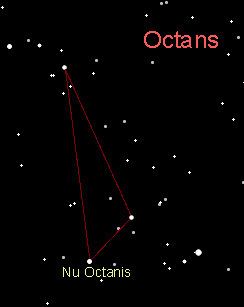
Sigma Octantis, the southern pole star, is a magnitude 5.4 star just over 1 degree away from the true South Celestial Pole. Its relative faintness means that it is not practical for navigation. Conveniently for navigators, there are other, much easier methods for locating the southern celestial pole.
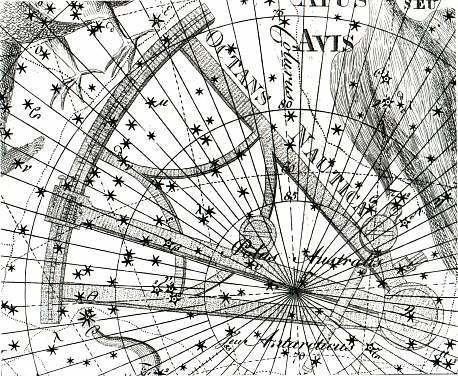
For example, the constellation Crux, the Southern Cross, currently points toward the South Celestial Pole, if one draws a line from Gamma Crucis to Alpha Crucis. Another method includes an asterism made up of Sigma, Chi, Tau, and Upsilon Octantis, which form a distinctive trapezoid shape.
In addition to having the current southern pole star of Earth, Octans also contains the southern pole star of the planet Saturn, which is the magnitude 4.3 Delta Octantis.
Namesakes
USS Octans (AF-26) was a stores ship used by the United States Navy during World War II.
